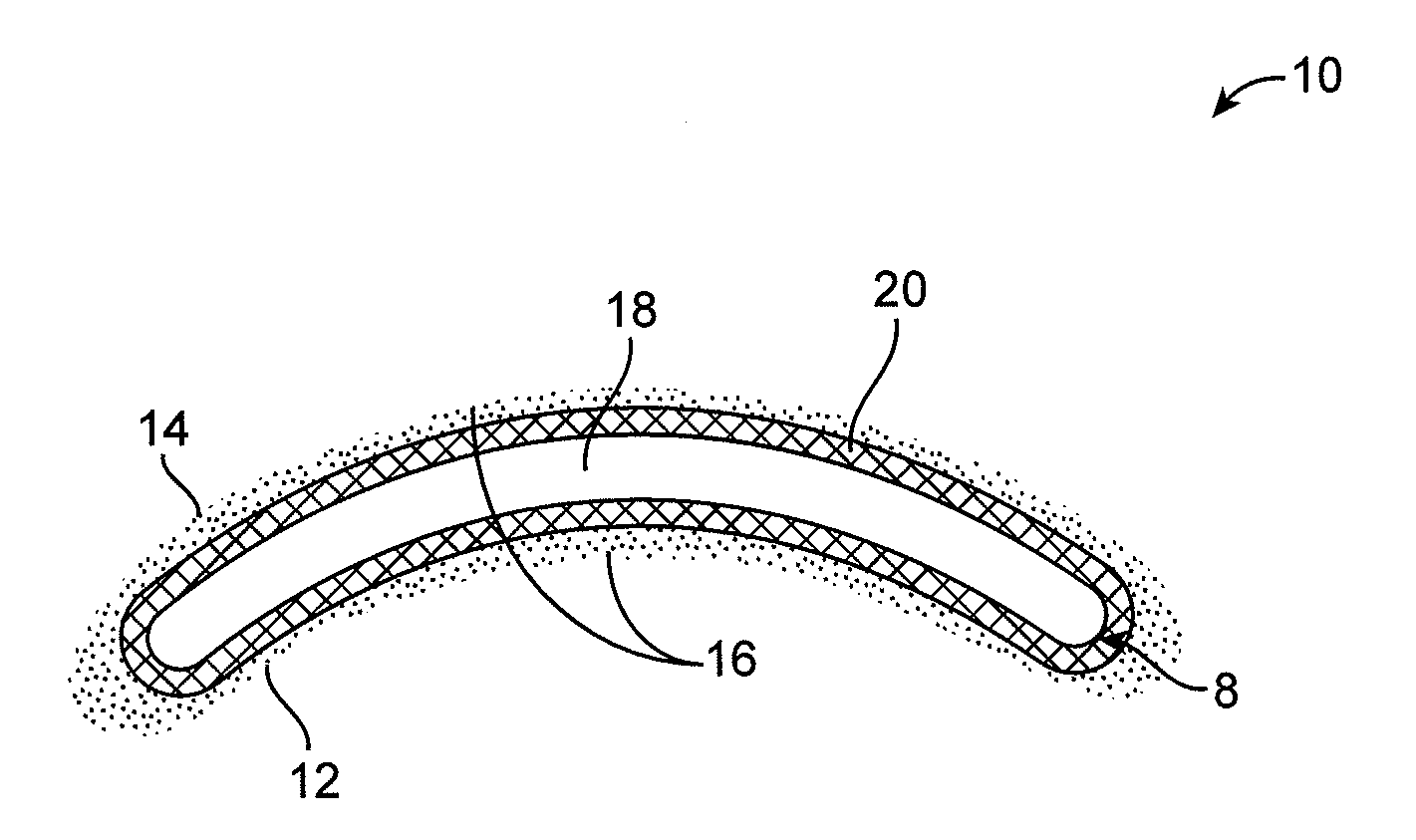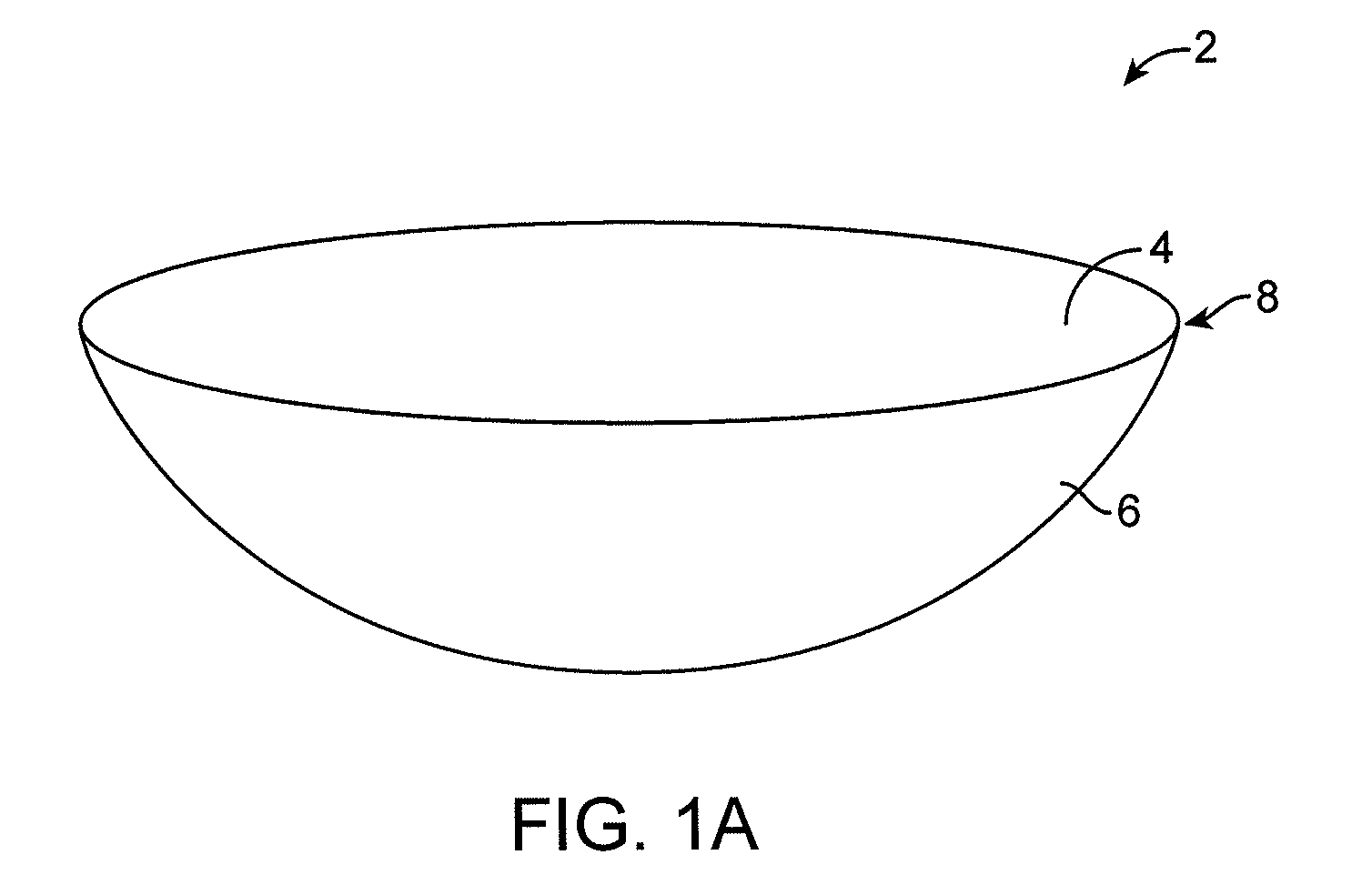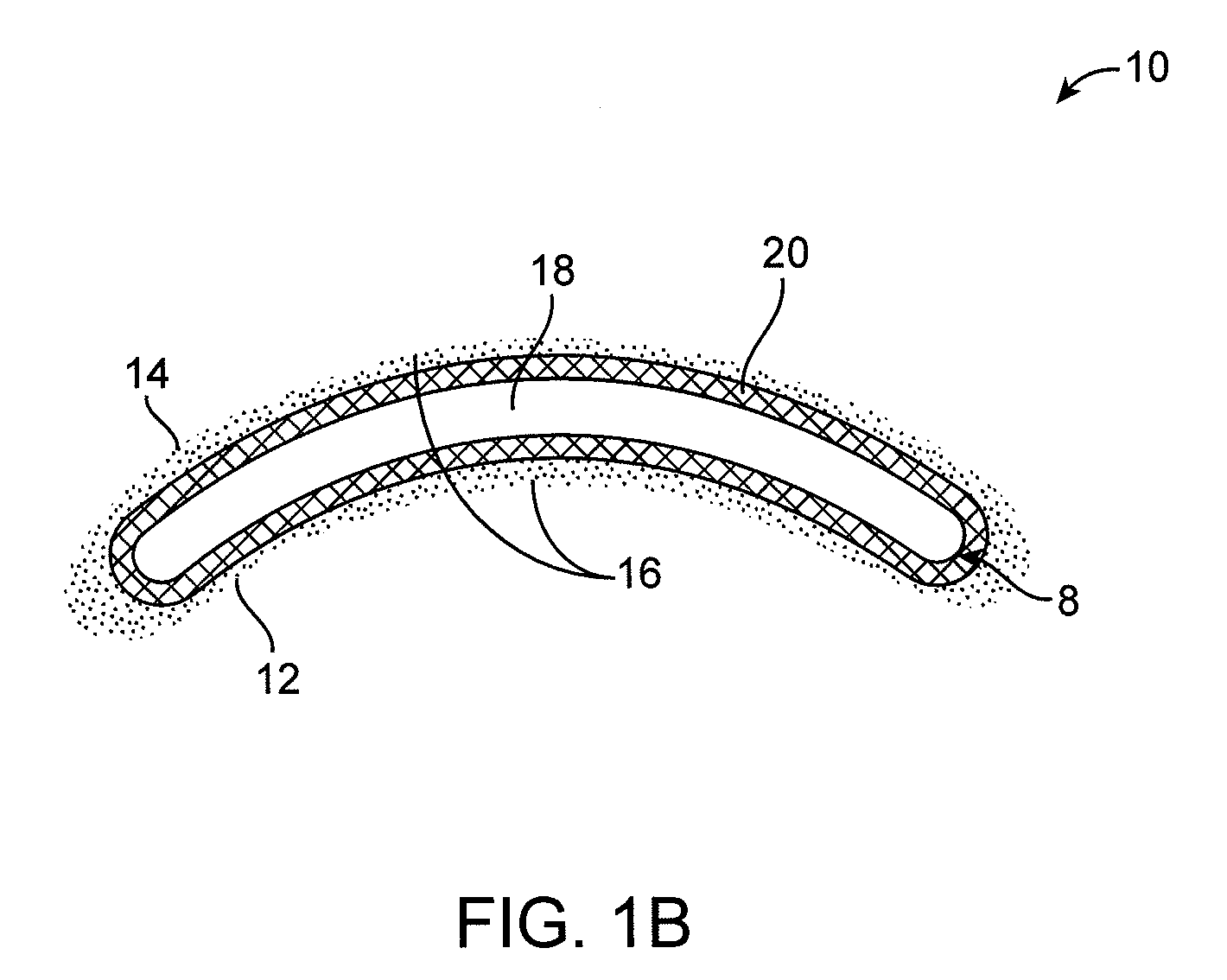Contact lens with a hydrophilic layer
a hydrophilic layer and contact lens technology, applied in the field of contact lenses, can solve the problems of ocular tissue and infection abrasion, user discomfort, and tendency for protein binding and absorption at the ocular site, and achieve the effects of maintaining the health of the ophthalmic surface, ensuring eye movement, and ensuring wearer comfor
- Summary
- Abstract
- Description
- Claims
- Application Information
AI Technical Summary
Benefits of technology
Problems solved by technology
Method used
Image
Examples
example 1
Functionalization of Silicone Hydrogel Lenses
[0288]Silicone hydrogel lenses were stored in purified water prior to functionalization. A solution of 10% by volume divinyl sulfone in 0.5M sodium bicarbonate (pH 11) were prepared. Lenses were added to the solution at a ratio of 6 lenses per 10 mL of solution and mixed vigorously on a shake plate for 60 minutes. The lenses were removed, washed in a strainer to remove any excess reaction solution, and added to a container of purified water at a ratio of 1 lens per 20 mL of water. They were mixed vigorously on a shake plate for 60 minutes. The washing procedure was repeated twice more for a total of 3 washes. Next, the lenses were stored in triethanolamine (TEOA) for at least 20 minutes and up to 6 hours prior to attaching the hydrogel layer.
example 2
Functionalization of Silicone Lenses
[0289]Silicone lenses were stored dry prior to functionalization. Lenses were added to a solution of 10% hydrochloric acid and 2% hydrogen peroxide at a ratio of 6 lenses per 10 mL. The lenses were mixed vigorously for 5 minutes and then removed, washed in a plastic strainer to remove any excess reaction solution, and then added to a container of purified water a ratio of 1 lens per 20 mL of water. They were mixed vigorously for 5 minutes. Next the lenses were added to a solution of 95% ethanol, 3% water, 1% glacial acetic acid, and 1% 3-mercaptopropyltrimethoxysilane and mixed vigorously for 60 minutes. The lenses were rinsed in a strainer with pure ethanol and added to a container of pure ethanol at a ratio of 1 lens per 20 mL of ethanol. The lenses were mixed vigorously for 60 minutes. This washing procedure was repeated once more. Finally the lenses were removed from the rinse solution and allowed to dry. They were stored at 4° C. Prior to att...
example 3
Plasma Functionalization of Silicone Containing Layers
[0290]Silicone containing layers (silicone or silicone hydrogel) were placed in a vacuum chamber for 2 hours to ensure all moisture was removed. After drying, lenses were inserted into a plasma chamber. Pressure was reduced to 375 milliTorr with continuous flow of nitrogen gas at 10 standard cubic centimeters per minute. The chamber was allowed to stabilize for 30 seconds before initiating plasma at 100 W for 3 minutes. The chamber was then vented to atmosphere and lenses removed. Lenses were then used within 1 hour.
PUM
| Property | Measurement | Unit |
|---|---|---|
| thickness | aaaaa | aaaaa |
| elastic modulus | aaaaa | aaaaa |
| elastic modulus | aaaaa | aaaaa |
Abstract
Description
Claims
Application Information
 Login to View More
Login to View More - R&D
- Intellectual Property
- Life Sciences
- Materials
- Tech Scout
- Unparalleled Data Quality
- Higher Quality Content
- 60% Fewer Hallucinations
Browse by: Latest US Patents, China's latest patents, Technical Efficacy Thesaurus, Application Domain, Technology Topic, Popular Technical Reports.
© 2025 PatSnap. All rights reserved.Legal|Privacy policy|Modern Slavery Act Transparency Statement|Sitemap|About US| Contact US: help@patsnap.com



